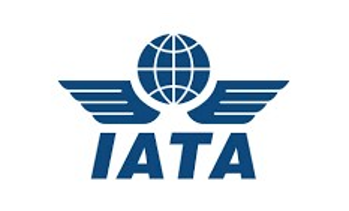 INTERNATIONAL. The International Air Transport Association (IATA) has spoken out against government travel bans following the emergence of the COVID-19 variant.
INTERNATIONAL. The International Air Transport Association (IATA) has spoken out against government travel bans following the emergence of the COVID-19 variant.
The association’s comments coincided with its latest Air Passenger Market Analysis, which reveals that the recent recovery in air travel continued in October, with improvements in both domestic and international markets.
The increased demand for air travel came on the back of rising vaccination rates and fewer restrictions. However, with COVID-19 infection rates, generally, and the Omicron variant, particularly increasing, IATA warned that the imposition of travel bans by governments – against the advice of the World Health Organization (WHO) – could threaten the sector’s recovery.
IATA Director General Willie Walsh commented: “October’s traffic performance reinforces that people will travel when they are permitted to. Unfortunately, government responses to the emergence of the Omicron variant are putting at risk the global connectivity it has taken so long to rebuild.”

He noted that the lifting of the US restrictions on travel from some 33 countries last month raised hopes that a surge in pent-up travel demand would buoy traffic over the coming Northern Hemisphere winter.

“But the emergence of the Omicron variant panicked many governments into once again restricting or entirely removing the freedom to travel – even though WHO clearly advised that ‘blanket travel bans will not prevent the international spread, and they place a heavy burden on lives and livelihoods’.
“The logic of the WHO advice was evident within days of Omicron’s identification in South Africa, with its presence already confirmed in all continents. The ill-advised travel bans are as ineffective as closing the barn door after the horse has bolted,” Walsh added.
As comparisons between 2021 and 2020 monthly results are distorted by the extraordinary impact of COVID-19, all comparisons by IATA are to pre-pandemic October 2019, which followed a normal demand pattern. |
IATA noted that total demand for air travel in October (measured in revenue passenger kms or RPKs) was down -49.4% compared to October 2019. This was better than the -53.3% comparative fall recorded in September 2021.
Domestic markets fell by -21.6% compared to October 2019, compared to the -24.2% decline recorded in September. International passenger demand in October was -65.5% below October 2019, compared to a -69.0% decline for September, with all regions showing improvement.

International Passenger Markets
IATA’s survey indicated that European carriers’ October international traffic declined by -50.6% versus October 2019, much improved over the -56.5% drop in September. Capacity dropped -41.3%.
Airlines in the hard-hit Asia Pacific region saw their October international traffic fall -92.8% compared to October 2019, a small improvement on the -93.1% decline recorded for September 2021. Capacity dropped -83.8%.

Middle Eastern airlines faced a -60.3% demand drop in October, a substantial change compared to the -67.1% in September. Capacity declined -49.1%.
In North America carriers experienced a -57.0% traffic drop in October versus the 2019 period, improved from a -61.4% decline in September. Capacity fell -43.2%. Figures for Latin America were similar, with a -55.1% drop in October traffic, and -61.4% in September. October capacity decreased -52.5%.
Traffic for African airlines fell by -60.2% in October compared to -62.1% in September, with capacity down -49.0%.
Domestic Passenger Markets

India’s domestic market saw a -27% decline in October demand compared to October 2019, a significant improvement from the -40.5% fall in September following the easing of some control measures.
Russia’s domestic traffic increased +24% compared to October 2019, a deceleration from the +29.3% growth recorded in September 2021 over the two-year ago period, attributable to a strong wave of COVID-19 and the start of the winter travel season.

Last month, IATA released a Blueprint to help guide governments in safely re-opening their borders with data-driven decision-making. Specifically, IATA urged governments to focus on three key areas:
- Simplified health protocols
- Digital solutions to process health credentials
- COVID-19 measures proportionate to risk levels with a continuous review process.
“Additionally, governments must address the terrible disparity in vaccination rates that has seen the developed world offering boosters at a time when less than 10% of the African continent is fully vaccinated,” Walsh concluded.
The full October Air Passenger Market Analysis can be accessed here.













